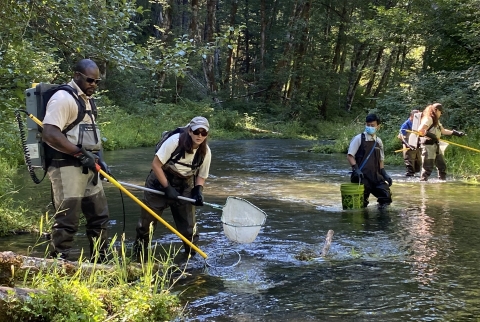The U.S. Fish and Wildlife Service plays a critical role in fighting the spread of aquatic invasive species invasive species
An invasive species is any plant or animal that has spread or been introduced into a new area where they are, or could, cause harm to the environment, economy, or human, animal, or plant health. Their unwelcome presence can destroy ecosystems and cost millions of dollars.
Learn more about invasive species by preventing introduction, working to detect and respond to new invasions, and controlling invasive populations of plants and animals. These activities reduce major stressors on native species and ecosystems. Reduced impacts from invasive species help increase the climate resilience of our ecosystems while also conserving biodiversity and the health of our waters. When native species thrive, recreational opportunities are enhanced for users from all backgrounds, culturally significant resources will be available for Tribal members, and the economy will benefit from increased spending on recreational fishing and other water-based outdoor activities. Stopping invasive species at our borders and educating the public on how to prevent invasive species from gaining a foothold in the United States also reduce opportunities for zoonotic pathogen spillover that can jeopardize human health.
We use HACCP planning to identify critical control points to prevent or reduce significant hazards that could be caused by unintentionally creating pathways for invasive or non-targeted species. These pathways--which can occur across a wide range of natural resource management applications--include:
- Conducting field or laboratory activities such as collecting and moving plants or animals, habitat or population enhancement efforts, research, developing or maintaining recreation sites, and other field work;
- Using equipment and materials such as cars, trucks, trailers, all-terrian vehicles, boats, aircraft, bulldozers, backhoes, sampling gearl (e.g. nets), wading gear, and clothing.
